- Top Employee Onboarding Software
- Why Use Employee Onboarding Software?
- Key Features of Effective Onboarding Software
- How To Choose The Right Onboarding Software?
- Which is the Best Onboarding Software?
- Frequently Asked Questions (FAQs)
- What Is Upskill And Reskill?
- Difference Between Reskilling And Upskilling
- Upskilling for Workplace Advancement
- Reskilling for Career Transformation
- Crafting Successful Upskill and Reskill Strategies
- Upskill And Reskill Strategizing: Things to Keep in Mind
- Measuring the Impact of Skill Development Initiatives
- Frequently Asked Questions
- What’s a Skill Gap?
- Employee Skill Gap Analysis: Why Do We Need It?
- How To Conduct Employee Skill Gap Analysis?
- Addressing Skill Gaps Through Training and Hiring
- Utilizing Skills Gap Analysis for Strategic Planning
- Leveraging Employee Skill Gap Analysis: Things To Keep In Mind
- Frequently Asked Questions
- Transformative Role of AI in Talent Acquisition
- Impact of AI on Business Recruiting
- Overcoming Challenges in AI-Driven Talent Acquisition
- Starting with AI in Talent Acquisition
- Future Landscape of AI in Talent Acquisition
- Frequently Asked Questions
- HR In The Hot Seat - Challenges With Evolving Workforce
- Mastering Effective HR Management: Tips For Overcoming Challenges
- Summing Up
- The Future of HR: Key Trends for 2024
- Skill-Based Hiring
- Prioritizing Employee Experience, Engagement & Well-being
- AI-Empowered Workforce Evolution and Its Impact
- Taking Diversity, Equity, and Inclusion Beyond Mandates
- Hybrid and Remote Work
- Embracing the Gig Economy and Blended Workforce
- Transparent HR Practices
- Climate Change Adaptation in HR Practices
- Leveraging HR Analytics for Data-Driven Decisions
- Continuous Learning & Development to Improve Productivity
- The Office Buzz in 2024
- Bottom Line - HR Operating Model Needs A Shift
- Importance and Impact of Recognizing Employee Birthdays
- Professional Birthday Wishes for Employees (All Experience Levels)
- Personalized Birthday Wishes for Employees in Different Roles
- Fun Birthday Wishes for Employees (with Templates)
- Birthday Wishes for Remote Employees
- Heartfelt Birthday Wishes for Employees
- Belated Birthday Wishes for Employees
- Simple & Sweet Birthday Wishes for Employees
- Celebrating Employee Birthdays: Ideas and Traditions
- Tips and Ideas for Sending Birthday Wishes to Employees
- Closing Thoughts
- Frequently Asked Questions
- What Is An Employee Referral?
- Benefits of Implementing Employee Referral Programs
- Setting Up an Effective Employee Referral Program
- Employee Referral Email
- Employee Referral Scheme
- Overcoming Challenges of Employee Referrals
- Companies with Best Employee Referral Programs
- Employee Referral Programs: Best Practices
- Closing Thoughts
- Frequently Asked Questions (FAQs)
- Importance of Team Building Activities
- Types of Team Building Activities
- Outdoor Team Building Activities for Employees
- Indoor Team Building Activities for Employees
- Easy Team Building Activities for Remote Employees
- Team Building Activities For New Employees (Icebreakers)
- Fun Team Building Activities for Different Goals
- To Boost Communication and Collaboration
- To Reduce Stress Levels and Promote Well-being
- Aligning Team Purpose and Values with Strategic Activities
- Final Remarks
- Frequently Asked Questions
- Importance of Employee Appreciation Quotes
- Work Appreciation Quotes for Employees
- Employee Appreciation Quotes for Hard Work Recognition
- Employee Appreciation Quotes for Teamwork and Collaboration
- Appreciation Quotes for Celebrating Employee Anniversaries and Milestones
- Employee Appreciation Quotes for Strong Work Ethics
- Employee Appreciation Quotes for Project & Goal Completion
- Employee Appreciation Quotes for Quality of Work
- Employee Appreciation Quotes for Creativity and Innovation
- Appreciation Quotes for Managers
- Peer-to-Peer Employee Appreciation Quotes
- Appreciation Quotes for Employees Leaving the Company
- Employee Appreciation Quotes for Thoughtful Gestures
- Funny Employee Appreciation Quotes
- Short Employee Appreciation Quotes
- Employee Appreciation Quotes for Different Roles
- Employee Appreciation Quotes for Senior Leadership
- Creative Ways to Use Employee Appreciation Quotes
- Summary
- Frequently Asked Questions (FAQs)
- What is Employee Satisfaction?
- Importance of Employee Satisfaction
- Objectives of Employee Satisfaction
- Employee Satisfaction vs. Employee Engagement
- Key Reasons for Employee Dissatisfaction
- Strategies for Improving Employee Satisfaction
- Ways to Measure Employee Satisfaction
- Best Practices for High Employee Satisfaction
- Final Remarks
- Frequently Asked Questions (FAQs)
- How to Craft Effective Employee Appraisal Comments
- Key Areas to Focus in Performance Review
- Comments On Hard Work & Dedication
- Assessing Interpersonal Skills
- Evaluating the Ability to Collaborate & Work in Teams
- Gauging Punctuality
- Commenting on Communication Style
- Reviewing Time Management and Productivity
- Leadership in Performance Appraisals
- Assessing Creativity & Innovation
- Evaluating Problem-Solving Abilities
- Recognizing Flexibility and Dependability in Reviews
- Employee Appraisal Comments for Different Roles
- Summary
- Frequently Asked Questions (FAQs)
- Employee Grievance Meaning
- Importance of Employee Grievance Process
- Types of Workplace Grievances
- Reasons for Employee Grievances
- Employee Grievance Procedure
- Steps in the Employee Grievance Handling Process
- Employee Grievance Form Example
- Final Remarks
- Frequently Asked Questions (FAQs)
- What is Company Culture?
- Importance of Company Culture
- Types of Company Culture
- Factors Contributing to Organizational Culture
- Assessing & Developing Corporate Culture
- Company Culture - It’s not just Perks or Feels
- Good Company Culture Examples
- Developing Company Culture: Best Practices
- Closing Thoughts
- Frequently Asked Questions (FAQs)
- What is Employee Empowerment?
- Benefits of Empowering Employees
- Employee Empowerment vs. Micromanagement
- Strategies for Effective Employee Empowerment
- Role of Managers in Fostering Empowerment
- Organizational Structure Supporting Empowerment
- Overcoming Barriers to Employee Empowerment
- Frequently Asked Questions (FAQs)
- What is Employer Branding?
- Importance of Employer Branding Strategy
- How to Build an Employer Branding Strategy?
- Strategies for Building a Strong Employer Brand
- How to Measure and Boost Your Employer Branding Success?
- Examples of Strong Employer Brand Strategy
- Best Practices for an Effective Employer Branding Strategy
- Closing Thoughts
- Frequently Asked Questions (FAQs)
- What are Employee Wellness Programs?
- Importance of Employee Wellness Programs
- Examples of Employee Wellness Programs
- Real-Life Examples of Corporate Wellness Programs
- Strategies for Encouraging Participation
- Supporting Diverse Employee Needs
- Creating Comprehensive Wellness Programs
- Measuring the Impact on Business and Employees
- Closing Thoughts
- Frequently Asked Questions (FAQs)
- What is Talent Management?
- Developing a Winning Talent Management Strategy
- Models and Frameworks
- Tips for Framing Effective Talent Management Strategy
- Looking Ahead: Recent Trends in Talent Management
- Frequently Asked Questions
- Role of AI in HR: Addressing Common Challenges
- Artificial Intelligence in HR Processes
- AI Tools for HR Functions
- How to Adopt AI in HR?
- Addressing Challenges of AI in HR
- Ethical and Responsible AI Use
- The Future of AI in HR
- Closing Thoughts
- Frequently Asked Questions
- What is Performance Management?
- Elements of Effective Performance Management
- Performance Management Cycle
- Differentiating Performance Management
- Benefits of Performance Management With Examples
- Challenges faced in Performance Management and their Solutions
- Future Trends in Performance Management
- Frequently Asked Questions
- Changing Role of HRM
- Changing Role Of HR Manager
- Technology and the Changing Role of HRM
- The Rise of AI and Machine Learning in HR
- Mobile Technology's Impact on HR Practices
- The Significance of People Analytics in HR
- Navigating the Future of HR Technology
- Final Remarks
- Frequently Asked Questions
- Compensation Management Meaning
- Compensation Types
- Breaking Down The Compensation Management Process
- HR Software for Compensation Management
- Current Trends in Compensation Management
- Frequently Asked Questions
- Defining Flexible Work Arrangements
- Flexible Working: Advantages for Businesses
- Challenges of Flexible Work Arrangements
- Crafting Flexible Working Practices
- Types Of Flexible Work Arrangements
- Comparing Flexible Work Arrangements
- Real-Life Examples of Flexible Work Arrangements
- Final Remarks
- Frequently Asked Questions
- Conflict Resolution Meaning
- Conflict Origins
- Tried & Tested Conflict Resolution Strategies
- Methods of Conflict Management at Workplaces
- Conflict Resolution Strategies: Top Management Tips
- Summary
- Frequently Asked Questions
- Career Development Meaning
- Career Development Plan for Employees
- Career Development in HRM: Growth Ideas For Employees
- Issues in Career Development and Their Solutions
- Closing Thoughts
- Frequently Asked Questions
- Understanding Compensation
- Exploring Benefits
- Difference between Compensation and Benefits
- Compensation & Benefits Structure
- Final Remarks
- Frequently Asked Questions
- Defining Recruitment in HR Practices
- Exploring Talent Acquisition in HR
- Understanding Talent Acquisition vs Recruitment
- When to Recruit or Acquire Talent
- Talent Acquisition vs Recruitment: Responsibilities
- From Recruitment To Talent Acquisition
- Closing Thoughts
- Frequently Asked Questions
- Work Culture Meaning
- Types of Work Cultures
- Components of Culture
- Best Work Culture Examples Set By Top Companies
- Creating a Positive Work Culture
- Closing Thoughts
- Frequently Asked Questions
- Defining Learning vs Development
- Importance of Learning and Development
- L&D Activities for Employees
- Choosing the Right L&D Activities
- Crafting an Effective L&D Strategies
- Aligning L&D Strategy with Business Goals
- Designing Engaging Learning Journeys
- Learning and Development Process: KPIs
- ROI in Learning and Development
- Emerging Trends in L&D
- Closing Thoughts
- Frequently Asked Questions
- What Is Leadership Development?
- Key Skills for Leaders
- How To Develop Leadership Skills in Organizations?
- What Is A Leadership Development Program?
- How To Develop A Leadership Development Program?
- Example of A Leadership Development Plan
- Benefits of Leadership Development Training
- Frequently Asked Questions
- Defining Diversity Training
- Importance of Diversity Training
- What are the Types of Diversity?
- Types of Diversity Training Methods
- Diversity Training Activities
- Choosing A Diversity Training Program
- How to Implement Diversity Initiatives
- Best Diversity Training Programs (Real-Life Examples)
- Improving the Effectiveness of Diversity Training
- Tracking and Evaluating the Results of DE&I Training Efforts
- Essential Elements for Successful Diversity Training
- Closing Thoughts
- Frequently Asked Questions
- Defining Occupational Health & Safety
- Evolution of Workplace Health and Safety
- Identifying Common Workplace Hazards
- Global Impact on Occupational Health & Safety
- Managing Employee Health and Safety Risks
- Occupational Health and Safety Problems
- Future of Occupational Health and Safety
- Frequently Asked Questions
- Employee Orientation Defined
- Employee Onboarding Explained
- Orientation and Onboarding: Understanding the Difference
- Importance of Orientation and Onboarding
- Crafting Comprehensive Integration Strategies
- Quick Tips for Orientation and Onboarding
- Frequently Asked Questions
- What is HR Metrics?
- Importance of HR Metrics
- HR Metrics Examples in Recruitment
- HR Metrics Examples in Employee Retention
- HR Metrics Examples in Revenue
- Other Common HR Metrics
- Soft HR Metrics Example
- HR Metrics Formula
- Utilizing HR Metrics Effectively
- Future of HR Metrics
- Summary
- Frequently Asked Questions
- Defining Decision Making Process
- Key Concepts In Decision Making
- Decision Making & Problem Solving
- Tips For Improving Decision Making Skills
- Selected Practice Questions & Answers
- Conclusion
- Frequently Asked Questions (FAQs)
- A case(s) of miscommunication
- The devil is in the (resume) details
- One for the complaints!
- What is an Exit Interview?
- Benefits of Exit Interviews to an Organization
- How to Conduct Exit Interviews?
- Exit Interview: Sample Questions to Ask
- Overcoming Challenges of Exit Interviews
- Exit Interviews: Best Practices
- Closing Thoughts
- Frequently Asked Questions
- Technology in the Workplace
- Benefits of Tech Integration
- Technology in the Workplace: Key Functions
- How Technology Normalized Remote Work
- Workplace Technology: Top Tools and Software
- Steps for Effective Technology Implementation
- Overcoming Tech Implementation Challenges
- Ethical Considerations in Tech Use
- Keeping Pace with Tech Trends
- Closing Thoughts
- Frequently Asked Questions
- What is Ethical Leadership?
- Principles of Ethical Leadership
- Difference between Ethics and Integrity
- Importance of Ethical Leadership
- Ethical Leadership in Practice
- Overcoming Challenges
- Frequently Asked Questions
- Embracing Change Management
- Mastering People Analytics
- Enhancing Stakeholder Relationships
- Navigating Diversity, Equity & Inclusion
- Upholding Ethics and Data Privacy
- Developing Critical Thinking
- Advancing Negotiation Techniques
- Fostering Inter-departmental Collaboration
- Building Resilience in HR
- Frequently Asked Questions
- What is Mental Health?
- Benefits of a Mentally Healthy Workforce
- Prioritising Mental Health: Creating a Culture of Support
- Final Remarks
- Frequently Asked Questions
- Gen Z vs Millennials - What is the difference?
- Retain and Engage Gen Z Employees: Need and Strategies
- Strategies to Retain and Engage Gen Z Employees
- Rethinking Requirements
- Final Remarks
- Frequently Asked Questions
- Understanding Millennial Leadership Needs
- Key Leadership Skills for Millennials
- How To Develop Millennial Into Leaders
- Additional Strategies to Develop Leaders
- Learning Preferences of Millennials
- Benefits of Investing in Millennial Leaders
- Closing Thoughts
- Frequently Asked Questions
- Understanding Fluff
- Examples of Interview Fluff
- Identifying Interview Fluff
- Addressing Interview Fluff
- Seeing Through the Fluff
- Frequently Asked Questions
- What is the Gender Pay Gap?
- Is the Gender Pay Gap Real?
- Factors Affecting the Gender Pay Gap
- How Age Impacts Women’s Earnings
- The ‘Motherhood Penalty’
- Education's Role in Wage Differences
- Racial and Ethnic Disparities in Pay
- Closing the Gender Gap
- Frequently Asked Questions
- Top Weirdest Late-To-The-Office Excuses
- The Fine Art of Balancing Wit and Wisdom in HR
- Understanding Social Media Recruiting
- Crafting Your Social Media Recruitment Strategy
- Implementing Your Strategy Effectively
- Popular Platforms for Recruitment
- Navigating the Downsides of Social Media Recruiting
- Measuring Success and Adjusting Strategy
- Summary
- Frequently Asked Questions
- Who Is A High Potential (HIPO) Employee?
- Characteristics of A High Potential (HIPO) Employee
- High Potential Employee Identification
- Grooming High Potential Employees
- Why High Potential Employees Leave
- How Do You Retain High Potential Employees?
- High Potential Employee Development: Best Practices
- Closing Thoughts
- Frequently Asked Questions
- What is Digital Fluency?
- Why Digital Fluency Matters?
- Difference between Digital Literacy and Digital Fluency
- Key Components of Digital Fluency
- Achieving Digital Fluency
- Overcoming Challenges
- Future of Workforce Digital Fluency
- Frequently Asked Questions
- What is Loud Quitting?
- Pros and Cons of Loud Quitting
- Reasons Behind the Trend
- Analyzing the Impact
- How HR Can Navigate the Loud Quitting Uproar
- Preventive Strategies
- Closing Thoughts
- Frequently Asked Questions
- Defining Emotional Intelligence in HR
- Why Emotional Intelligence Matters for HR Leaders
- How To Build Emotional Intelligence in HR
- Integrating EQ into HR Practices
- Impact of EQ on Company Culture
- Emotional Intelligence in HR: Major Challenges
- Final Remarks
- Frequently Asked Questions
- Understanding Internal Job Posting
- Internal Job Posting: Pros and Cons
- The Internal Job Posting Process
- Writing Effective Ads for Internal Job Posting
- Strategies for Success of Internal Job Posting
- Summary
- Frequently Asked Questions
- Understanding Workplace Bias
- Common Types of Bias in HR
- Closing Thoughts
- Frequently Asked Questions
- What is a Dry Promotion?
- Dry Promotion: Pros and Cons for Companies
- Impact of Dry Promotion on Employee Retention
- Preventing Talent Loss After Dry Promotions
- Closing Thoughts
- Frequently Asked Questions
- What Is A Stay Interview?
- Importance Of Stay Interviews
- Benefits And Challenges Of Stay Interviews
- Planning And Conducting Stay Interviews
- Stay Interviews: 20 Sample Questions To Ask
- Best Practices For Effective Stay Interviews
- Summary
- Frequently Asked Questions
- Who Is A Boomerang Employee?
- Reasons For Returning
- Benefits Of Hiring Boomerang Employees
- Challenges Of Rehiring
- Interviewing Boomerang Candidates: Sample Questions
- Enhancing The Hiring Process
- Making Informed Decisions
- Final Remarks
- Frequently Asked Questions
- Talent Pipeline Meaning
- Significance of Talent Pipelines
- Advantages of a Talent Pipeline
- Building a Talent Pipeline
- Maintaining a Talent Pipeline
- Attracting Top Talent
- Implementing the Strategy
- Frequently Asked Questions
- What is Micromanagement?
- Recognizing Micromanagement
- Leadership versus Micromanagement
- Keeping Micromanagement in Check
- Beyond Micromanagement
- Summing Up
- Frequently Asked Questions
- Recognizing Signs Of A Bad Hire
- Understanding The Impact On Teams
- Dealing With A Bad Hire
- Preventing Future Bad Hires
- Closing Thoughts
- Frequently Asked Questions
- Defining Neurodiversity
- Importance of Neurodiversity in the Workplace
- Moving Towards Inclusive Environments
- Final Remarks
- Frequently Asked Questions
- Understanding the Generation Gap
- Multigenerational Workforce: Debunking Stereotypes
- Strategies for Bridging the Gap
- Benefits of a Multigenerational Workforce
- Final Remarks
- Frequently Asked Questions
- Defining Productivity Theatre: All Show, No Go
- 5 Key Drivers of Fake Productivity
- Solutions to Combat Productivity Theatre
- Summary
- Frequently Asked Questions
- Defining Grumpy Staying
- Why do Grumpy Stayers not Leave?
- Recognizing the Signs
- Exploring the Causes
- Understanding the Impact
- Addressing the Issue
- Taking Action: Addressing Grumpiness with Empathy
- After the Conversation
- When Grumpy Staying Continues
- Closing Thoughts
- Frequently Asked Questions
- The Rationale Behind Office Peacocking
- Impact on Company Culture
- Impact on Employees
- Case Studies: Examples of Office Peacocking
- The Downside: Potential Pitfalls of Office Peacocking
- Practical Tips for Implementing Office Peacocking
- Frequently Asked Questions
- 13 Common Mistakes Young Managers Make
- Strategies To Avoid Mistakes (Individual Growth)
- How Young Managers Can Boost Teamwork
- Learning From Errors
- Summary
- Frequently Asked Questions
- Understanding Great Regret - What causes the shift shock?
- Impact of Great Regret
- How can HR help make the situation better?
- Closing Thoughts
- Frequently Asked Questions
- Understanding the HR Budget
- Key Components of an HR Budget
- Preparing an HR Budget Step-by-Step
- Importance of HR Budgeting in Management
- Final Remarks
- Frequently Asked Questions
- What are Pre-Employment Assessments?
- Importance of Pre-Employment Testing
- Types of Pre-Employment Assessments
- 15 Tips for Creating Effective Pre-Employment Assessments
- Closing Thoughts
- Frequently Asked Questions
- Exploring the Productivity Paradox
- Understanding the Impact of Solow Paradox
- Productivity Paradox: Why it Matters for Recruiters & HRs
- Identifying Causes and Challenges
- Strategies for Enhancing Productivity
- AI & the Modern-Day Productivity Paradox
- Beyond Technology: Building a Productive Workforce
- Summary
- Frequently Asked Questions
- Understanding the Great Reshuffle 2.0
- Preparing Leaders for the Change
- HR’s Role in Handling Great Reshuffling 2.0
- The Way Ahead
- Frequently Asked Questions
- Definition Of Managerial Grid
- Managerial Grid Theory Explained
- Application Of Managerial Grid
- Criticisms And Limitations
- Evolution And Contemporary Perspectives
- Integrating Managerial Grid With Other Models
- Practical Steps For Implementing Managerial Grid
- Conclusion
- Frequently Asked Questions
- Understanding Skills Taxonomy
- Why do we Need Skills Taxonomy?
- Benefits of Skills Taxonomy
- Components of Skills Taxonomy
- Building a Skills Taxonomy: A Step-by-Step Guide
- Skill Taxonomies vs Intelligence Tools
- Closing Thoughts
- Frequently Asked Questions
- Definition Of Team Building
- Stages Of Team Development
- Top 10 Strategies For Effective Team Building
- Team Building Activities
- Best Practices For Effective Team Building
- Setting Team Building Objectives
- Challenges In Team Building
- Conclusion
- Frequently Asked Questions (FAQs)
- Defining Job Shadowing
- Unpacking the Benefits
- Setting Up the Experience
- Job Shadowing vs Internship
- Dos and Don'ts for HR Professionals
- Closing Thoughts
- Frequently Asked Questions
- Employee Journey Mapping: Meaning & Importance
- Stages of the Employee Journey
- Steps for Effective Mapping
- Employee Journey Map: Where does it begin?
- Employee Journey Map: Template
- Best Practices & Tips
- Summary
- Frequently Asked Questions
- Why are Performance Appraisals needed?
- Evolution of Performance Management
- Modern Performance Practices
- Benefits of Modern Performance Appraisals
- The Future
- Frequently Asked Questions
- Is Experience the Sole Indicator of Success?
- Why Hire Inexperienced Talent?: Key Advantages
- Skills to Look For in Inexperienced Talent
- Challenges and Considerations in Hiring Inexperienced Talent
- Final Remarks
- Frequently Asked Questions
- What is a Company Retreat?
- Company Retreat Ideas: Team-Building & Exploration
- Relaxation and Celebration
- Planning Your Retreat: Things to Keep in Mind
- Closing Thoughts
- Frequently Asked Questions
- Understanding HR Forecasting
- HR Forecasting Key Concepts
- Steps for Implementing HR Forecasting
- Common HR Forecasting Methods
- Closing Thoughts
- Frequently Asked Questions
- What is ESG?
- HR and ESG - Why Care?
- ESG in HR Strategy
- Challenges for HR
- Future of ESG in HR
- Frequently Asked Questions
- Defining the Great Betrayal
- Reasons for Its Spread
- Impact on Workers
- Impact on Corporations
- Rebuilding Trust & Valuing Employees
- Closing Thoughts
- Frequently Asked Questions
- Importance of Clear Expectations
- Setting Expectations Early
- Communicating Expectations Effectively
- Differentiating Expectations
- Reviewing and Adjusting Expectations
- Summing Up
- Frequently Asked Questions
- Understanding KRA Frameworks And Models
- KRAs vs KPAs and KPIs
- Monitoring and Tracking KRAs
- KRAs in Various Roles
- Impact of KRA Frameworks and Models on Organizational Success
- Frequently Asked Questions
- Where: The Place of Work
- When: The Time of Work
- How Much Work: Alternate Employment Models
- Who Does the Work: Intelligence
- Designing Organizations with the Four Dimensions of Work
- Summing Up
- Simplifying Processes: The Foundation of Efficiency
- Reducing Unnecessary Meetings: Reclaiming Valuable Time
- Building Strong Accountabilities: Ensuring Responsibility
- Role of HR in Addressing Inefficiencies
- Continuous Improvement: A Commitment to Excellence
- Leadership's Role in Driving Efficiency
- Conclusion: A Holistic Approach to Efficiency
- Understanding Financial Freedom
- Benefits of Empowering Employees Financially
- Empowering Employees Through Financial Literacy
- Financial Topics That Need Attention Based On Career Stage
- Summing Up
- Frequently Asked Questions
- Defining Employee Voice
- Benefits of Amplifying Employee Voice
- Strategies and Tools
- Encouraging Participation
- Closing Thoughts
- Frequently Asked Questions
- Appraisal Blues: Signs of Unhappy Employees
- Addressing Unhappiness Post-Appraisal
- Non-Monetary Solutions for Dissatisfied Employees
- Summing Up
- Frequently Asked Questions
- Women in the Middle Eastern Workforce
- Importance of DEIB
- Role of HR in Building Inclusive Workplaces for Women
- Measuring Inclusion Progress: Key Metrics
- Closing Thoughts
- Frequently Asked Questions
- Preparing for the Conversation
- Conducting the Conversation
- Best Practices for the Talk
- After the Conversation
- Helping Employees Grow
- Frequently Asked Questions
- Understanding HR Exhaustion
- Factors Leading To HR burnout
- Impact Of HR Burnout
- Strategies To Prevent And Manage HR Burnout
- Role Of Technology In Preventing Burnout
- Celebrating HR Successes
- Summary
- Frequently Asked Questions
- Common Mistakes When Hiring Young Talent
- Building Connections with Candidates
- Summary
- Frequently Asked Questions
- Walking a mile in the employee’s shoes
- Conducting Humane Layoffs
- Remote Layoffs Management
- Supporting Laid-off Workers
- Managing the Aftermath
- Wrapping Up
- Frequently Asked Questions
- Importance of Shortening Time-to-Hire
- Shortening Hiring Time: Pre-Application Stage
- Reducing Hiring Time: Application Stage
- Hacks to Shorten Hiring Time: Interview Stage
- Reducing Hiring Time: Offer Stage
- 5 Other Important Hacks & Strategies
- Final Remarks
- Frequently Asked Questions
Understanding Workplace Bias: 10+ Common Types And Ways To Address Them
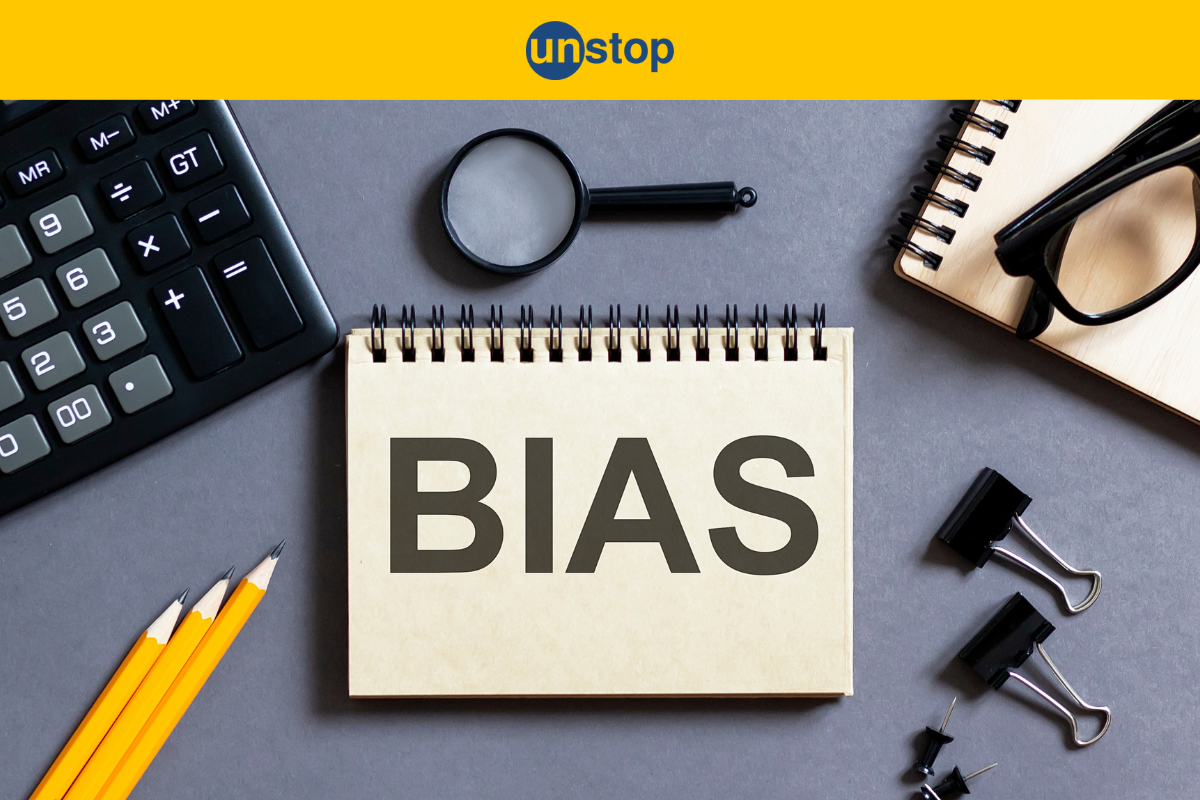
Biases in HR can have far-reaching consequences, affecting not only individuals but also the overall organizational culture. From unconscious biases based on gender or race to affinity biases that favor individuals with similar backgrounds or interests, these biases can undermine diversity, equity, and inclusion efforts within a company. Understanding the various types of biases is crucial for HR professionals to implement effective strategies that promote equal opportunities and fairness for all employees.
Understanding Workplace Bias
Bias refers to the tendency or inclination to favor or discriminate against some individuals or groups based on personal preferences, stereotypes, or preconceived notions. In the context of the workplace, bias can manifest in various forms and impact decision-making processes, employee interactions, and overall organizational culture.
Fundamentally, bias is a personality-based propensity for something. All humans are biased, but managers or leaders in particular, should avoid allowing their biases to influence how they evaluate their staff members.
Importance of Recognizing Biases
Recognizing and addressing biases in the workplace is crucial for creating an inclusive and equitable environment. By acknowledging the existence of biases and taking steps to mitigate their impact, organizations can foster a culture that values diversity and promotes equal opportunities for all employees.
One key reason why recognizing bias is important is because it helps prevent discrimination. When biases go unnoticed or unaddressed, they can result in unfair treatment towards certain individuals or groups. This not only affects employee morale but can also lead to legal consequences for the organization.
Furthermore, addressing bias promotes diversity and inclusion within the workforce. When employees from different backgrounds feel valued and included, they are more likely to contribute unique perspectives and ideas. This diversity of thought can drive creativity and problem-solving within the organization, leading to better outcomes and a competitive edge in the market.
Recognizing bias also helps build trust and improve employee relationships. When employees feel that their contributions are evaluated fairly and objectively, they are more likely to be engaged and satisfied with their work. This, in turn, can lead to higher productivity and retention rates.
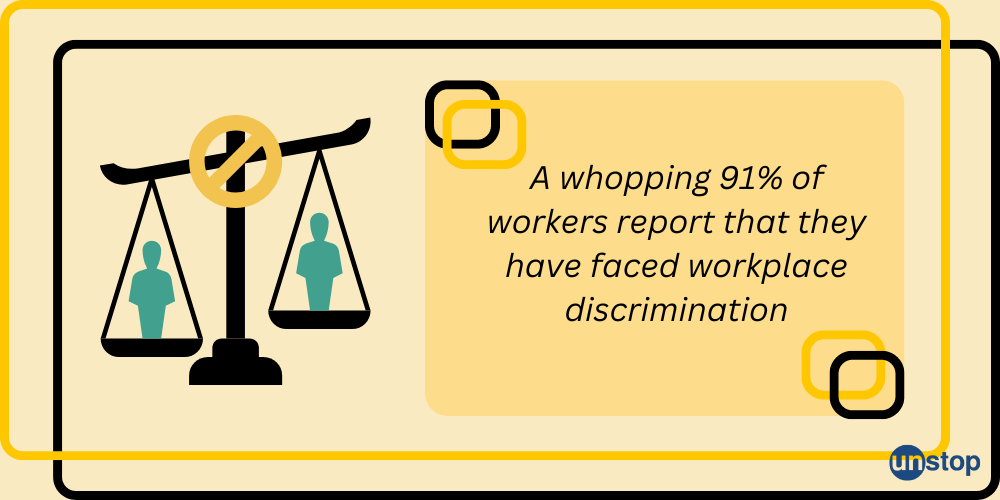
Common Types of Bias in HR
Confirmation Bias
Confirmation bias is a common type of bias that can impact HR decisions. This bias occurs when individuals seek out information or interpret it in a way that confirms their preexisting beliefs or assumptions. In the context of HR, confirmation bias can lead to unfair treatment of employees during hiring, performance evaluations, and promotion processes.
An example of confirmation bias at the workplace is when a hiring manager, who thinks that graduates from a particular university are the best candidates, pays more attention to positive traits in applicants from that university while overlooking their shortcomings and ignoring the strengths of candidates from other universities.
This perception leads to unfair treatment or evaluation of employees, stifling diversity and innovation, and perpetuating a homogenous work environment where only familiar or expected ideas and behaviors are valued.
To mitigate confirmation bias in HR, organizations can implement structured interview processes and standardized evaluation criteria. By using objective measures, organizations can ensure fair and unbiased decision-making.
Similarity-Attraction
Similarity-attraction bias refers to the tendency for individuals to favor people who are similar to themselves. In HR, this bias can manifest in various ways, such as hiring candidates who share similar backgrounds or experiences with the decision-makers.
For instance, if an HR team is predominantly composed of individuals from a certain ethnic background, they may unconsciously gravitate towards candidates who share the same background. This can result in a lack of diversity within the organization and limit opportunities for individuals from different backgrounds.
To address similarity-attraction bias, organizations should prioritize diversity and inclusion initiatives. This includes actively seeking out diverse candidates, implementing blind resume screening processes, and providing unconscious bias training for HR staff.
Conformity Bias
Conformity bias occurs when individuals go along with the opinions or actions of others without critically evaluating them. In an HR context, this bias can influence decision-making processes, such as performance evaluations and team assignments.
For example, if a manager expresses a negative opinion about an employee, other team members may unconsciously adopt the same view without independently assessing the employee's performance. This can lead to unfair treatment and hinder the growth and development of employees who may have valuable contributions to offer.
To combat conformity bias, organizations should encourage open dialogue and diverse perspectives within teams. Organizations can promote fair decision-making by building an environment where individuals feel comfortable challenging prevailing opinions and sharing alternative viewpoints.
Affinity Bias
Affinity bias refers to the tendency for individuals to favor others who are similar to them in terms of background, interests, or beliefs. In HR, this bias can impact various aspects such as hiring, team assignments, and promotions.
For instance, if an HR manager has a personal connection with a candidate or employee, they may unconsciously give preferential treatment to that individual. This can result in missed opportunities for other qualified candidates who do not share the same affinity.
To address affinity bias, organizations should establish clear guidelines and criteria for decision-making processes that ensure fair evaluation regardless of personal similarities.
Contrast Effect
The contrast effect is a cognitive bias that occurs when we compare two or more items or individuals and our perception of one is influenced by the presence of the others. In the context of HR, this bias can have significant implications for employee evaluations and decision-making processes.
One example of the contrast effect in HR is performance evaluations. Imagine a situation where an HR manager is evaluating two employees, A and B. If A's performance is evaluated immediately after B's, and B's performance is exceptional, it could lead to a contrast effect. The HR manager may perceive A's performance as relatively poorer compared to B's, even if their performance is objectively good. This bias can unfairly impact employees' career progression and opportunities.
To mitigate the contrast effect in the workplace, companies can standardize evaluation criteria and train employees to assess each individual's performance independently, without comparison to others. Regular calibration sessions can help to maintain consistency and fairness in evaluations.
Halo and Horns
The halo and horns effects are biases that happen when an individual's overall impression of someone influences their perception of particular traits or characteristics. These biases can significantly impact HR decisions related to recruitment, performance evaluations, and promotions.
The halo effect refers to a situation where an individual's positive qualities overshadow any negative aspects they may possess. For example, if an employee has consistently performed well in their role, they may receive favorable evaluations across all dimensions, even if they have areas for improvement. This bias can lead to upper hand for certain employees and hinder accurate assessments.
On the other hand, the horns effect occurs when an individual's negative qualities overshadow any positive attributes they may have. For instance, if an employee has made a few mistakes in their work, their overall performance may be negatively perceived, even if they excel in other areas.
To address the Halo and Horn effect in the workplace, companies can provide training to managers and employees, ensuring that both positive and negative traits are assessed independently and fairly. They must encourage peer reviews and 360-degree feedback to balance individual evaluations and foster a more comprehensive and unbiased perspective.
Attribution Bias
Attribution bias is a cognitive bias that occurs when individuals attribute the behavior or actions of others to internal characteristics rather than external factors. In HR, this bias can influence how managers perceive and evaluate employee performance, leading to unfair judgments and decisions.
One example of attribution bias in HR is the fundamental attribution error. This error occurs when individuals attribute the behavior of others to their personality traits or inherent qualities, rather than considering situational factors. For instance, if an employee fails to meet a deadline, a manager who exhibits attribution bias may conclude that the employee is lazy or lacks motivation without considering external factors such as workload or resource constraints.
To address this, companies can promote a culture of empathy and understanding, encouraging individuals to consider situational factors before making judgments about others' behavior. Implementing objective performance metrics to evaluate actions based on data rather than personal assumptions, can also be helpful.
Illusory Correlation
Illusory correlation is a cognitive bias that happens when we perceive a relationship between two variables that do not actually exist. In the context of recruitment, this bias can lead to unfair judgments and decisions based on false associations. For example, an HR manager might mistakenly believe that candidates from top-tier universities are more likely to be successful in the job, even though there is no evidence to support this belief.
This bias can have serious consequences for both employers and job seekers. Candidates who do not fit into the perceived "ideal" profile may be overlooked, even if they possess the necessary skills and qualifications. On the other hand, individuals who match the illusory correlation may be given preferential treatment, regardless of their actual abilities. This can result in a lack of diversity within organizations and missed opportunities for talented individuals.
To mitigate the impact of illusory correlation in recruitment, HR professionals should focus on objective criteria and evidence-based assessments. By relying on concrete data such as past performance, relevant experience, and specific skills, recruiters can make more informed decisions that are free from biases.
Appearance Biases
Appearance biases refer to the tendency to judge others based on their physical appearance and not assess them based on their qualifications or abilities. These biases can manifest in various ways during the recruitment process. For instance, research has shown that attractive candidates are often perceived as more competent and trustworthy, leading to preferential treatment. Conversely, individuals who do not conform to societal standards of beauty may face discrimination and bias.
While it is natural for humans to form initial impressions based on appearances, it is important for HR professionals to recognize and overcome these biases.
Appearnce bias can be addressed if recruitments are based purely on merit rather than superficial characteristics. Implementing blind screening processes where candidate information such as names and photos are removed can help reduce appearance biases. Moreover, organizations should promote diversity and inclusion by actively seeking out candidates from different backgrounds.
Intuition Bias
Intuition bias refers to the tendency to rely on gut feelings or intuitive judgments rather than objective evidence when making decisions. In recruitment, intuition bias can lead to subjective assessments and biased evaluations of candidates. HR professionals may rely on their instincts rather than thoroughly evaluating each candidate's qualifications and suitability for the role.
An example of intuition bias can be when a manager consistently promotes employees based on their 'gut feeling' about their potential rather than relying on objective performance data. Or, a recruiter might favor a candidate because they remind them of a successful past hire rather than basing the decision on the candidate’s qualifications and fit for the job.
To overcome intuition bias, training programs that raise awareness about biases and provide tools for unbiased decision-making can be beneficial. HR professionals should continuously educate themselves about different types of biases in order to recognize them and take proactive measures to mitigate their influence in the recruitment process.
Authority Bias
Authority bias refers to the tendency to favor or give preferential treatment to individuals who hold positions of authority or have a higher status within an organization. This bias can manifest in various ways during the hiring process, leading to unfair advantages for certain candidates.
One example of authority bias is when recruiters or hiring managers prioritize applicants from prestigious universities or companies simply because of the reputation associated with those institutions. This can result in overlooking highly qualified candidates who may not have had the same opportunities but possess the necessary skills and experience.
Another aspect of authority bias is relying heavily on recommendations or referrals from current employees or individuals in influential positions. While referrals can be valuable, solely relying on them can lead to a limited pool of candidates and exclude others who may be equally qualified, if not more so.
To mitigate authority bias, organizations should focus on objective criteria such as skills, qualifications, and relevant experience when evaluating candidates. Implementing structured interview processes and using standardized assessment tools can help reduce the influence of personal biases and lead to a fair evaluation.
Gender Bias
Gender bias in HR refers to the unequal treatment or opportunities based on an individual's gender. It is a pervasive issue that can affect different aspects of the employee lifecycle, including recruitment, promotion, compensation, and performance evaluations.
One common manifestation of gender bias in recruitment is the tendency to favor male candidates over equally competent female candidates. This bias can arise from stereotypes that associate certain roles or industries with specific genders. For example, there may be a perception that women are better suited for administrative roles while men are seen as more suitable for leadership positions.

Gender bias can also impact salary negotiations, with studies showing that women are often offered lower starting salaries compared to their male counterparts. Women may face challenges in accessing career advancement opportunities due to biased performance evaluations or limited mentorship and sponsorship opportunities.
According to a survey conducted by the rating agency Crisil and DBS Bank India, 23% of salaried women in India believe there is a pay gap based on gender. Additionally, 16% of these women feel that there is gender bias present in their workplace.
To address gender bias in HR, organizations can implement strategies such as blind resume screening, where identifying information like gender is removed from resumes during the initial screening process. Organizing unconscious bias training for employees, and creating mentorship programs for underrepresented genders can also help mitigate gender bias.
Age Bias
Age bias, also known as ageism, refers to the discrimination or unfair treatment of individuals based on their age. This bias can impact both younger and older candidates in the recruitment process.
One example of age bias is when employers prefer younger candidates over older ones due to stereotypes that associate youth with energy, adaptability, or technological proficiency. This can result in qualified older candidates being overlooked for positions they are well-suited for.
On the other hand, older candidates may face challenges in securing employment due to preconceived notions about their learning capabilities or adapting skills. This bias can be particularly prevalent in industries that prioritize youth or have a strong emphasis on technology.
To combat age bias, organizations should evaluate candidates based on their skills, experience, and qualifications rather than making assumptions based on age. Implementing age-blind recruitment practices and encoraging a culture of inclusivity that values diverse perspectives and experiences can help address age bias in HR.
Closing Thoughts
Creating a bias-free workplace is an ongoing effort that requires continuous education, awareness, and commitment. By actively challenging biases and promoting diversity and inclusion, you not only create a more equitable work environment but also enhance creativity, innovation, and overall organizational success.
Ultimately, the goal is not just to eliminate bias but to create environments where diversity thrives and innovation flourishes. Let us embrace the challenge with enthusiasm and determination, knowing that by doing so, we not only create better workplaces but also contribute to a more just and equitable society.
Frequently Asked Questions
Q1. What is workplace bias?
Workplace bias refers to the unfair or prejudiced behaviour with individuals based on gender, race, age, or disability. It can manifest in various forms and impact hiring decisions, promotions, and overall work environment.
Q2. What are some common types of bias in HR?
Common types of bias in HR include gender bias, racial bias, ageism, and affinity bias. These biases can influence recruitment decisions, performance evaluations, promotions, and opportunities for career advancement.
Q3. Can you provide examples of workplace biases?
An example of workplace bias is when a qualified candidate is passed over for a job due to their age or perceived lack of technological skills. Another example is favouring candidates who share similar interests or backgrounds with the hiring manager.
Q4. Are there more biases in recruitment besides the commonly known ones?
In addition to gender, race, ageism, and affinity biases, other biases that can occur during recruitment include beauty bias (favouring attractive candidates), confirmation bias (seeking information that supports preconceived notions), and halo effect (overvaluing positive traits while ignoring negative aspects).
Q5. How can workplace biases related to authority and demographics be addressed?
To address authority and demographic biases in the workplace, it is essential to implement diversity training programs that raise awareness about these biases. Establishing inclusive policies and practices can help create a fair and unbiased work environment.
Suggested Reads:
As a biotechnologist-turned-writer, I love turning complex ideas into meaningful stories that inform and inspire. Outside of writing, I enjoy cooking, reading, and travelling, each giving me fresh perspectives and inspiration for my work.
Login to continue reading
And access exclusive content, personalized recommendations, and career-boosting opportunities.
Subscribe
to our newsletter
Blogs you need to hog!
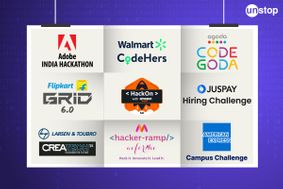
Organize Hackathons: The Ultimate Playbook With Past Case Studies

What is Campus Recruitment? How To Tap The Untapped Talent?

Lateral Hiring: A Complete Guide To The Process, Its Benefits, Challenges & Best Practices
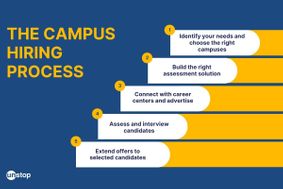









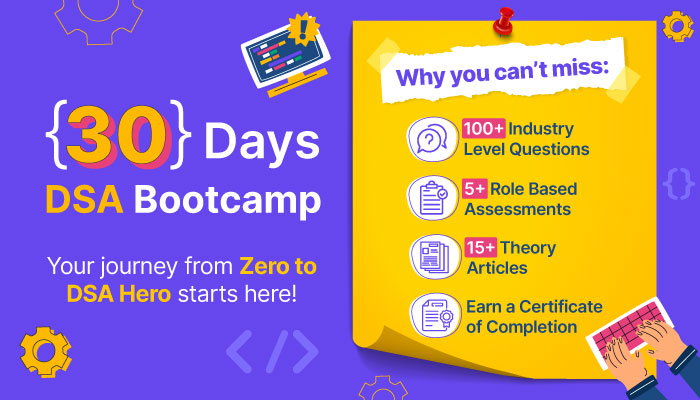



Comments
Add comment